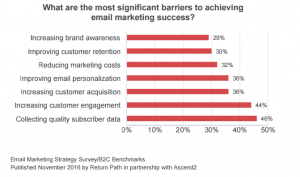Who thought we would still be facing a seemingly never-ending pandemic after two years?
We’re faced with a reality few predicted, and even fewer wanted. As I’ve noted previously, businesses have persevered throughout the pandemic and found new paths to success.
It’s commendable, and we need to continue that momentum in the new year. We should heed the endless lessons from much of the past two years to set ourselves up for success in the year ahead.
Planning has never been so important.
I have long advocated that leaders establish clear goals for their organizations and articulate those expectations to their teams. From there, managers at all levels need to review their goals and track progress to understand shortcomings and areas for improvement.
Think back to when the first variant emerged; it threw many organizations back into chaos. However, as additional variants have surfaced, we’ve been able to take the revelations more in stride, and now we are better positioned and prepared to expect additional disruptions.
While we cannot plan for every scenario, we can understand how we responded to the last crisis, repeat what worked and revise what did not.
In doing so, I think we will all agree that technology is the common denominator. Without the deliberate deployment of technology, companies will not be successful in the new year.
Technology powers the flexibility we need for modern work.
At the pandemic’s start, businesses quickly pivoted to enable remote work. Now, many organizations will likely continue to enable their teams to work from wherever.
It’s no surprise that, according to Pew research, 90% say the internet has been essential or important to them during the pandemic. Additionally, 40% say they used the internet or technology in new ways during the pandemic.
Yet despite this data, too many Americans still do not have the reliable access to the internet they need to succeed.
A separate Pew report found roughly a quarter (24%) of adults with annual household incomes of less than $ 30,000 don’t own a smartphone. Meanwhile, roughly four in ten do not have home broadband services (43%) or a desktop or laptop computer (41%).
Businesses must help close the digital divide.
Companies must ensure their teams have the tools to succeed, including connectivity and the knowledge to use today’s technology.
It could be training employees to use the solutions that power modern business or working with local governments to expand broadband access in communities. Consider the recently passed infrastructure bill that includes $ 65 billion to expand broadband access.
While the money is available today, what happens when it isn’t available tomorrow? Do communities have a plan to procure the money needed to continue the expansion of reliable broadband to underserved communities?
It cannot be delivered solely through government mandates or traditional commercial channels. It requires innovative public-private partnerships to serve as a catalyst to narrow the digital divide.
Those of us who live our lives online can easily overlook that so many of our neighbors struggle to stay connected. Everyone deserves an opportunity, and those opportunities begin with a connection — a professional one and a seemingly invisible one that brings the world to their doorstep.
The first step in solving any problem is acknowledging one exists. The country has somehow ignored the lack of connectivity for far too long for many reasons. No more.
Business 2 Community(7)









